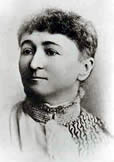Beauty is the eye of the beholder
♥
This saying first appeared in the 3rd century BC in Greek. It didn't appear in its current form in print until the 19th century, but in the meantime there were various written forms that expressed much the same thought. In 1588, the English dramatist John Lyly, in his Euphues and his England, wrote:
"...as neere is Fancie to Beautie, as the pricke to the Rose, as the stalke to the rynde, as the earth to the roote."
Shakespeare expressed a similar sentiment in Love's Labours Lost, 1588:
Good Lord Boyet, my beauty, though but mean,
Needs not the painted flourish of your praise:
Beauty is bought by judgement of the eye,
Not utter'd by base sale of chapmen's tongues
Benjamin Franklin, in Poor Richard's Almanack, 1741, wrote:
Beauty, like supreme dominion
Is but supported by opinion

David Hume's Essays, Moral and Political, 1742, include:
"Beauty in things exists merely in the mind which contemplates them."
The person who is widely credited with coining the saying in its current form is Margaret Wolfe Hungerford (née Hamilton), who wrote many books, often under the pseudonym of 'The Duchess'. In Molly Bawn, 1878, there's the line "Beauty is in the eye of the beholder", which is the earliest citation of it that I can find in print.
No comments:
Post a Comment